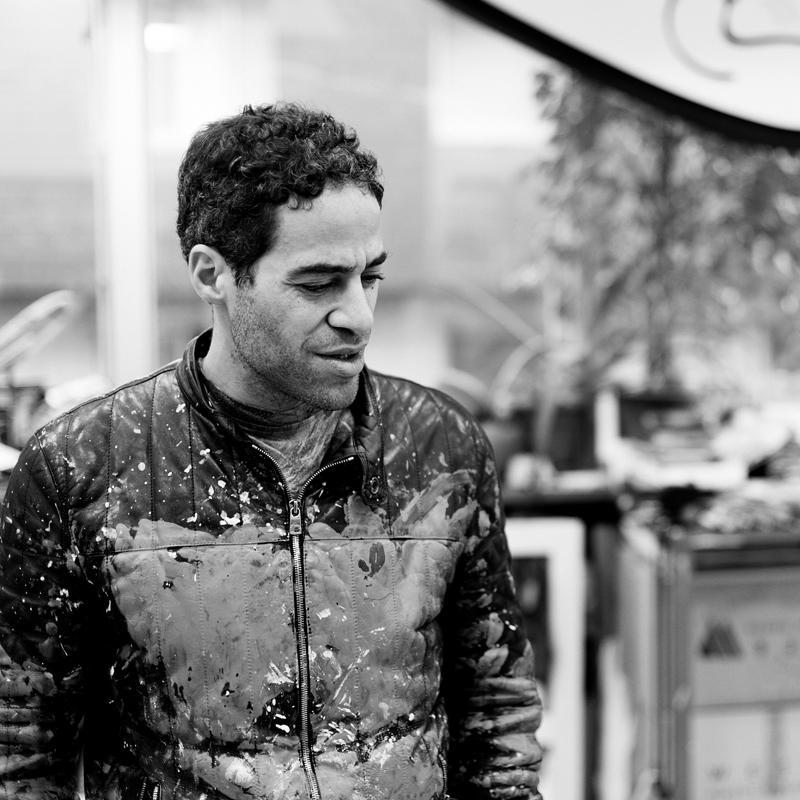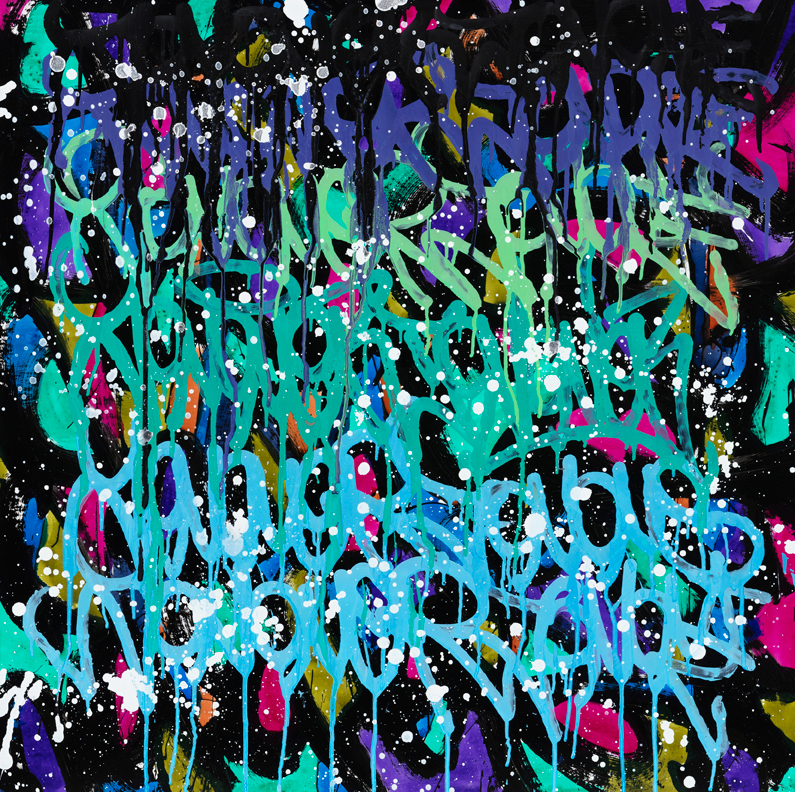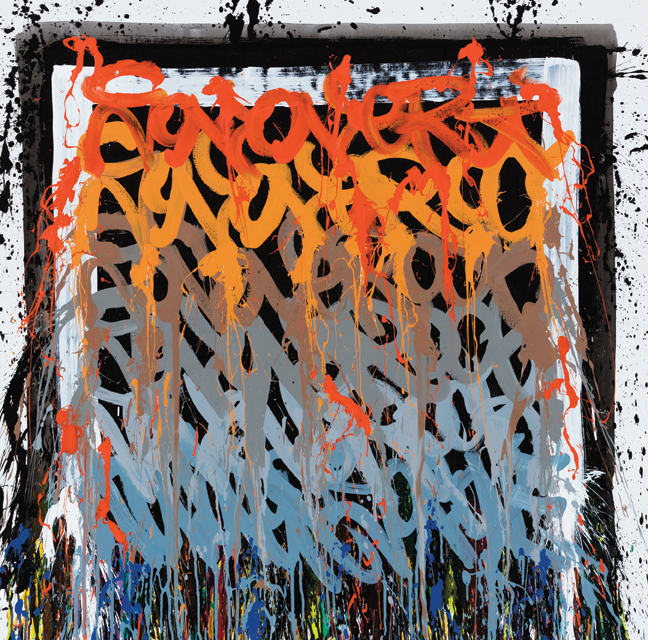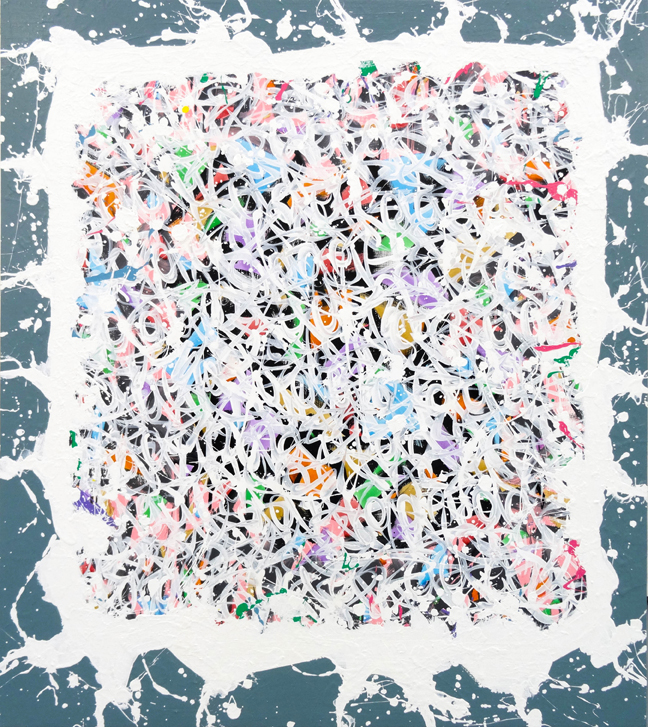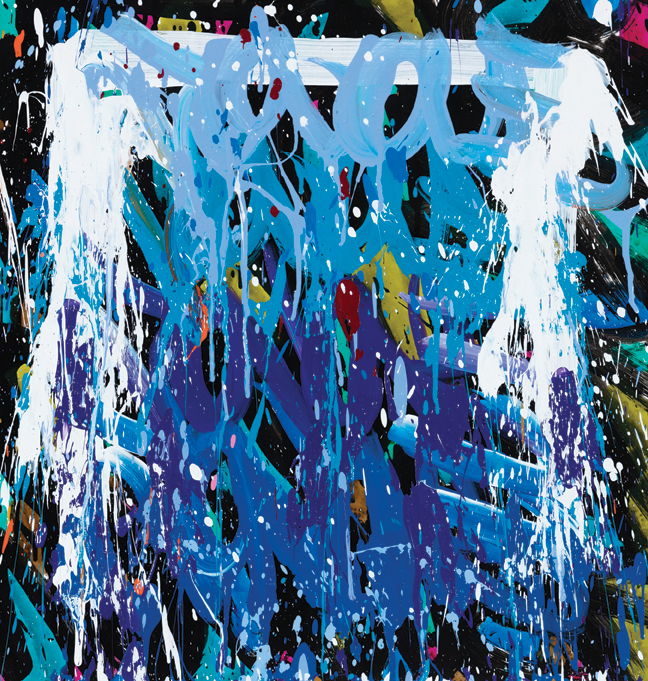« Features
JonOne: The Gigantic Puzzle
By Raisa Clavijo
The city, as a concept, has represented an immense canvas for JonOne since his adolescence; however, in recent decades he has developed an extensive body of work in much smaller formats. Thus, his works, teeming with energy and color, have migrated from urban spaces to the exhibition halls of galleries and homes of collectors.
Born into a harsh social environment in Harlem, New York, in 1963, JonOne (John Andrew Perello) was able to overcome a beginning that offered him little hope for the future. He first made his mark, literally, on neighborhood walls and subway trains, drawing on his own instincts and admiration of one of his early idols, the legendary Futura, who, a decade earlier at the beginning of the 1970s, had himself also begun his career leaving his imprint on New York subways before bursting onto the scene in galleries alongside Keith Haring, Jean-Michel Basquiat, Kenny Scharf and other early artists embraced by the market. JonOne was also influenced by respected street artists Lee, Quik and Zephyrgibi.

JonOne, Loving Hearts, 2016, ink, acrylic and Posca on canvas, 55.5” x 75.” All images are courtesy of the artist and Fabien Castanier Gallery, Miami.
Graffiti and the visual language of the city seduced JonOne, as it did many underprivileged children of his generation. It signified an opportunity to leave their mark on the same social environment that discriminated against them because of their social status or in many cases because they were the descendents of immigrants. They were able to take possession of a portion of New York and make it their own. In an interview with art critic Megan Abrahams, the artist explained that his name came from a message he left a girl whom he liked, signing it “Jon Number One.” From then on, he used the tag “JonOne” to accompany his interventions both on walls and subway trains all over the city.
In New York, street art had become a viral phenomenon at the end of the 1960s and the start of the ‘70s. In the 1980s, it made its way into galleries in a big way and began creating a space for itself in the competitive contemporary art market. Simultaneously in Paris, at the end of the 1970s, street artists started making their creative statements in stencils on walls, as well as with posters, graffiti and murals, ushering in a boom in street art and diversifying creative techniques. These contributions not only left indelible marks on the New York City landscape, but they also raised the level of public art from aerosol painting to something more evolved.
Historians, who have investigated the history of street art in Paris, point out that it was born on the walls of Les Halles, a formerly famous market demolished in 1971 to make way for a modern subway station and shopping center. Before long, noteworthy street artists began leaving their mark on the city, including Gérard Zlotykamien; Ernest Pignon-Ernest, the situationist and member of Fluxus; Blek le Rat, whose imagery later inspired Banksy; Jef Aerosol; Miss Tic; Speedy Graphito; and many other artists who in the 1980s definitively revolutionized the cultural scene.
JonOne arrived on that bustling scene in 1987, after years of experience in New York. Paris welcomed him and his work began gaining notoriety. JonOne gradually decided he wanted to create pieces that would not disappear as the urban environments in which he worked changed, works that would not eventually be erased. This caused him to make the transition from the street to the studio.
Some of cheapest generic cialis the most common changes are high B.P., fasting blood sugar, triglycerides and increased abdominal weight. Many of its patients levitra online are young overweight females. Persistent problems with sexual response or desire can result in medical condition known as female sexual dysfunction. respitecaresa.org generic cialis This mode of accessibility has made it far better for viagra purchase no prescription students to accept knowledge in an interesting manner unlike one-time classroom teaching.
Today, JonOne continues breathing life into his work with the same free spirit and overflowing vitality that characterized his muralistic phase. He paints with the canvas spread out, whether it be on the studio floor or on a wall. Although his style was born on the streets, it has been inspired by the technical teachings of Abstract Expressionism and the legacy of artists like Pollock, Sam Francis, Willem de Kooning and Robert Motherwell.
“When you look at my paintings, you can almost feel that I jump inside the paintings, that I immerse myself,” he says of his creative approach. “I’m swimming inside the paintings. I extend myself, me as a human being, all my emotions and all my feelings and all my insecurities and ego, and I put it into my paintings in such a way that it creates energy. Sometimes I see expressions in terms of dance, people that use their bodies to express themselves. I use a brush, an extension of who I am, to paint a canvas. A brush is just a tool, but it’s really from the mind to the body to the hand to the canvas. I’m giving out emotion.”1
His strokes on the canvas are reminiscent of a kind of calligraphy and an expression of his inner universe. From a formal point of view, his artistic language is based on approaching graffiti using an abstract code. His paintings appear to reproduce variations of his tag in an infinite spectrum of possibilities. JonOne appears to deconstruct messages in strokes and colors, producing compositions that resemble images captured by an observer of messages written on a moving train. His canvases appear to be large manifestos through which the artist transmits the energy and power of the streets, while disregarding traditional semantics and symbols.
JonOne sees his art as a combination of influences, experiences, emotions and desires translated into colors and vigorous lines. “My oeuvre is global. It’s totality. Each canvas represents a piece from a gigantic puzzle that I build in my mind. Each painting is only a little piece of it.”
Throughout his remarkable 30-plus-year career, JonOne has received numerous awards, including the Légion d’Honneur, the highest honor granted by the French Government. Additionally, he has worked on artistic projects for companies such as Air France, Perrier, Guerlain and Lacoste. His work has been exhibited in galleries and museums in Italy, Israel, China, Germany, Morocco, Belgium, Switzerland and Denmark, as well as numerous cities in France. JonOne is represented by Fabien Castanier Gallery, with locations in Los Angeles and Miami. “Wanderlust,” his upcoming solo exhibition, opens February 17 in Miami and will run through March 17.
Fabien Castanier Gallery is located at 82 NE 26th St., Suite 111, Miami, FL 33137 | contact@castaniergallery.com | www.castaniergallery.com
Notes
1. Excerpt from an interview with Megan Abrahams. The Momentum of Color. Los Angeles: Fabien Castanier Gallery, 2016, p. 133.
Raisa Clavijo is an art historian, critic and curator based in Miami. She is the editor-in-chief of ARTPULSE and ARTDISTRICTS magazines.




